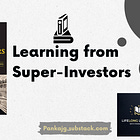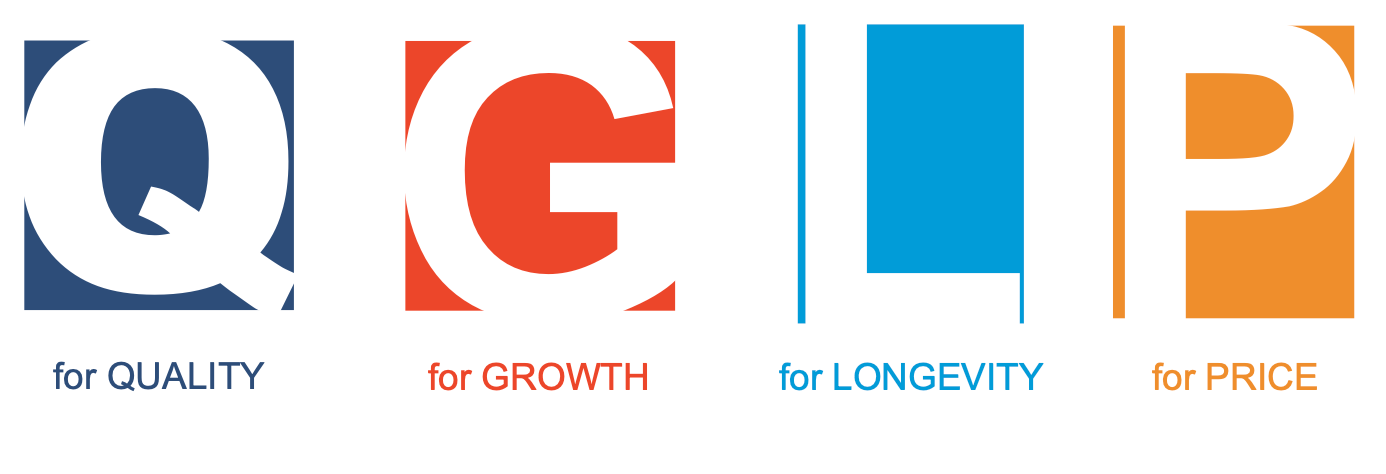Are you ready to learn from someone who made over 200X in 1.5-2 years? Someone known as Warren Buffet from India? Yes! We are talking about Raamdeo Agrawal Ji, a Super-Investor with an eminent track record. Let’s get a Masterclass!
Previous posts:
⚠️ ATTENTION
I am not SEBI Registered. This is not a recommendation or advice. Please consult your financial advisor.
Any stock mentioned is not a recommendation.Learnings from Raamdeo Agrawal
(1) lollapalooza in the Initial Phase of the Market Journey
The Harshad Mehta bull-run happened. From that initial Rs. 10-15 lakh, we made around Rs. 30 crore in the next 18-24 months!
That's a mind-blowing 200X in 2 years 😲😲 These are all not investing gains. However, it exemplifies how businesses grow exponentially run by great management when multiple tailwinds are at play (lollapalooza): Once we became a broker, we could employ six other sub-brokers. Hence, increasing capacity 6X. Plus, brokerage used to be 1.5%. Also, the moment we booked a brokerage, I would immediately buy a stock against that. Our stocks were also rocketing rapidly. T+15 was the official settlement time, but with holidays, it effectively became around T+20. So if we had Rs.10 lakh as brokerage income, I used to buy stocks immediately. It used to become Rs.15-20 lakh, just by the time of settlement!
💡Can you Identify factors that can create lollapalooza in your journey?? The factors that can help stack the probabilities in your favor?(2) Process - Thinking Frameworks
Every 3-4 years you get a big idea. The rest are more like portfolio stocks - they are not defining stocks.
So how to evaluate ideas? By looking through the lens of various frameworks, if an idea presents as a winner - it increases the conviction or probability of success.
Frameworks
Investing is about envisioning it first. How do you do that? We all have two eyes and a brain. The difference is how we look at a particular situation using the frameworks we have. So you try to put the various facts together.
It's a very creative process. We have a lot of frameworks for generating ideas. I go by a lot of stories - I can pick up an idea even while watching IPL cricket match. Most of the ideas come from reading books or newspapers. You notice something and sometimes it clicks.
So I have many frameworks in my mind from the wealth creation studies - value migration, competitive structure, monopolist structure, terms of trade, etc. Every idea comes from a very different thought process and then goes through the filters of these frameworks.
Framework #1: QGLP - Quality, Growth, Longevity and Price
QGLP is simple to understand but requires a lot of discipline to implement. All the buckets (Q, G, L, P) have to be filled, otherwise there could be a problem. Zero multiplied by anything is zero. So if any part in the QGLP equation is zero, the result will be zero. It starts with Quality of Business, then Quality of Management, Growth, Longevity of Growth, and finally a reasonable valuation. It is in that sequence. So if the quality of business is bad, I will not be interested in that business even if it is run by the trinity of Brahma, Vishnu, and Mahesh!
Framework #2: Value Migration
“Value migration is the shifting of value-creating forces. Value migrates from outmoded business models to business designs that are better able to satisfy customers' priorities.” (src: Wikipedia)
Forget the definition, Value Migration can be learned from the examples below:
e.g. Infosys was value migration from Boston to Bangalore
e.g. Hero Honda was value migration from Scooters to Motorcycles
e.g. HDFC Bank value migration from public banks to private banks
e.g. Titan value migration from unorganized jewelry retail to organized
Can Quick Commerce prove to be a value migration from Kirana?
Can Atmannirbhar Bharat prove to be value migration from what were imports to domestic manufacturing and even increased exports?
The question to ask is if the business under evaluation beneficiary of value migration? What is the pace of migration? What are the triggers?Recommended reading: Value Migration by Adrian Slywotzky
Framework #3: Network Effects
Utility increases with increase in number of other users of the same product or technology. Eg. You can only use WhatsApp if the person you intend to communicate with is on WhatsApp. As the number of users increased the utility of the app increased.
Platform businesses thrive on network effects. Here the winner takes all and usually leads to a monopoly type structure. Note: This is not an exhaustive list of frameworks. I'll try to cover more of them in separate posts as we focus here on Ramdeo Agrawal Ji. This is one of the key learning that we have to develop frameworks and keep developing them to improve our thought process. (3) Focussed Portfolio
I learnt quite a few lessons from Warren Buffett. One of the major lessons was that one needs to have a focused portfolio strategy while investing. I had around 200 stocks at that point of time! I brought that down to 15 companies that I really liked. I got my wife to do that. Every day she used to go and sell shares of five companies. My portfolio value doubled that very year.
We saw in the QGLP framework that the number of companies passing the filter are few. Why invest in your 50th best idea?
By having a concentrated portfolio you benefit from compounding of knowledge as well. When a significant amount of capital is entrusted to one idea, you will be on top of your game - thinking it through, abreast of what is happening in the Company / Sector. Further, it is easier to track if you have to track less.In the Y2K boom, we had made Rs.100 crore. We were 80% invested in technology, 40% of which was Infosys.
Again as with Damani Ji, amazing wealth was created by being invested in the leading sector with a concentrated position in leader stock.(4) Focus on Compounding and again an Atoot Vishwas in India Story
Mother of all value is compounding. The markets just do not understand compounding. If you ask questions about compounding in a group, four people will raise their hands. And if you ask the summation of compounding, not even one person will raise his hand. People just don't see the growth logic beyond one or two years. Markets leave so much value on the table. Nobody thinks about that. And if growth doesn't come in India, where will it come?
I think we haven't seen anything as yet. This was just a trailer - lot of wealth will be made going forward. The economy keeps growing and new entrepreneurs are coming. New businesses keep getting started. You need to be on the right side of the flow.
This is already happening...time and again. The markets now see new emerging sectors getting listed on the exchanges. What a wealth defense-sector has created in recent times? Solar power? EMS?
The list is endless.(5) Average Up or Pyramiding in trading parlance
A significant learning was to average up - we used to make one-shot investments. If the research is good, one should average up. Now there is wisdom and experience. Companies have their own life, and success breeds success. Now I am an entrepreneur as well and I am talking from my business experience. I run a slightly diversified company, not a monoline business.
When you start a business, you struggle for five to ten years, and then you develop some competitive edge and start picking up. You won't know how big a success you can become.
Don’t think that the price has doubled so you shouldn't buy more. You are the best person to understand what will happen next - you know the management and you can see future business. If you see further potential, you shouldn't hesitate to buy the same stock. That is how you keep building up the position. You should do it till you think that the markets have gone nuts or there is no earnings growth left. When the growth comes down, you should sell.
Essentially, don't succumb to anchoring bias. Oh, I bought it at 100, 150 is too expensive! Market does not care what price you bought at. It is discounting the future. If you still have a favorable risk-reward, why not double down on your trusted idea? Example: pyramiding in Techno Electric
Other excerpts from the book
Taming emotions
Today, the market fluctuations do not bother me too much. But earlier, even till 1998, the market fluctuations did impact me - my mood would go up and down with the market. When the markets were down, I would be uneasy and even angry at home. But today, you cannot make out how the market is by looking at my face. It takes a lot of time to figure out the difference between price and value. See, you can't control the price but can only control the value. I am very happy when the markets fall and I can buy something that adds more value to my portfolio. Markets don't understand high quality value in the short-term. Focusing on the value is the key.
I never look at the stock price, just the market cap.
Read Voraciously
That's the motto - Learning Lifelong!
Reading is one of the easiest ways to learn - amplify it by implementing it.On a side note, I always had one book in my hand. I started reading 15-20 books every year, and that's how I started building my investing framework.
In 1996, we started writing our wealth creation studies. The first such study was to felicitate our corporatization after we switched from partnership to a corporate structure in 1996. Whatever books we read to gather knowledge, we simultaneously ran data on it so that the knowledge gets internalised.
We always wanted to write something new - our new discoveries in terms of investing. That was our urge to share. With every year of research and publication, we became better at our art of investments. In addition, Mr.
Buffett was writing the principles of investing, which we continued to imbibe and practice.
28 Wealth Creation has been published. They are full of insights. On Bubbles
Every bubble has a different character. It's like going to a party. You might go to a party late but you want to stay till the last hour when everybody is enjoying to their fullest, everybody is drunk and dancing. The last one-hour is the most interesting. It is then when the party gets interesting and nobody wants to miss the fun and quit the party. People have to be thrown out. It's the same in the stock market. You make 2-3% every day. Every day, there is such excitement, so much volume and so much brokerage. Even if you know it's getting scary, you don't want to quit; at least we didn't quit. Even though I had a very clear inclination that excesses have happened. It's only a matter of time that the boom might collapse. But it was so much fun that we didn't quit. We didn't time the market and were in fact buying stocks with whatever money was coming.
Attributes important for an Investor
Be Positive.
Have Patience - don’t be short-term oriented and should have the patience to sit.
Being ambitious is important but doing it the right way is equally important.
Plan your future
Disclaimer - Mr. Raamdeo Agarwal contributed to this investment book in his Personal Capacity.
Resource: Masterclass with Super Investors by Vishal Mittal and Saurabh Basrar.
Book/reading recommendations by Raamdeo Agarwal Ji
Measuring the Moat by Michael Mauboussin was an excellent article (click to see the latest article)
Adaptive Markets—Financial Evolution at the Speed of Thought by Andrew W. Lo discusses a good concept—that we have to change with the markets.
Invest in yourself…. be a learning machine.
These communities have helped me learn the nuances of investing. Why not check them out? - Join the community of learners.
Supporting my work
This Substack will never be paywalled. I don’t want to accept voluntary payments for future unknown work.
But if you got this far, chances are you find my writing valuable. So please spread the word! Sharing, liking, and commenting all help spread the word!
Connect on X @pankajgarg_ciet
Disclaimer: I am not SEBI registered. The information provided here is for educational purposes only. This is not a buy or sell advice. I will not be responsible for any of your profit/loss based on the above information. Consult your financial advisor before making any decisions.










Worth reading